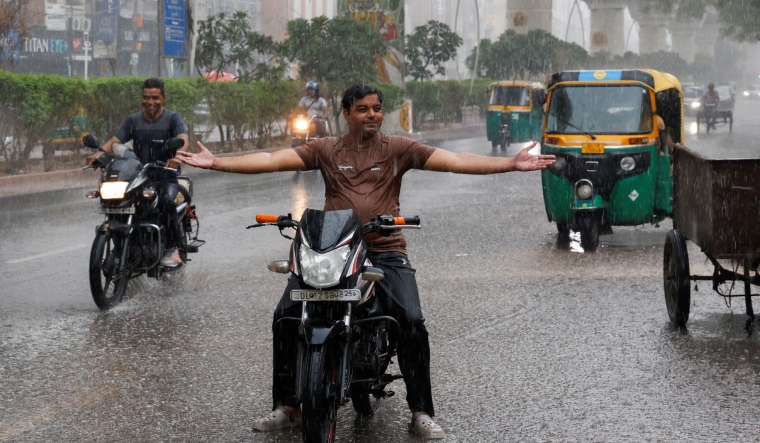India's national capital might not have received any rain on Monday against predictions, but the meteorological department has issued an "orange" alert for July 2 and 3. The torrential rain that brought Delhi to its knees last week was not a result of a cloudburst, the IMD clarified on Monday.
The forecast predicts a cloudy sky for the next seven days, with moderate to heavy rains over the next two days and thunderstorms with gusty winds across the city.
Meanwhile, private weather-forecasting agency Skymet posted on X, "The past two days have seen some respite from the downpours in Delhi and NCR (National Capital Region). However, weather experts predict a resurgence in rain activity, likely intensified rainfall over Delhi starting from July 2."
The capital will be on an "orange" alert due to rain, according to the India Meteorological Department's (IMD) seven-day forecast.
The IMD also released an advisory for the rainfall, outlining the expected impact and suggested activities.
According to the IMD, moderate rain is defined as rainfall amounting to between 7.6 mm and 35.5 mm in a day and heavy rain is defined as rainfall amounting to between 64.5 mm and 124.4 mm in a day.
The IMD defines very heavy rain as rainfall amounting to between 124.5 mm and 244.4 mm in a day.
According to the IMD, more than 100 mm of rain in one hour over an area of 20-30 square km is called a cloudburst.
"The prolonged heat wave spell in northwest India increased the moisture-holding capacity of the atmosphere, thus increasing the probability of heavy rainfall in Delhi," he added.
Explaining the reason behind the extreme weather event, the IMD had earlier said multiple large-scale monsoonal weather systems created conditions for mesoscale convective activity over Delhi-NCR, resulting in intense thunderstorms and heavy rainfall during the early hours of June 28.
This activity was supported by thermodynamic instability in the atmosphere, which is favourable for thunderstorms.
The Safdarjung Observatory recorded 228.1 mm of rainfall in the 24 hours ending at 8.30 am on Friday, more than three times the June rainfall average of 74.1 mm and the highest for the month in 88 years -- since 1936.
- With PTI inputs


